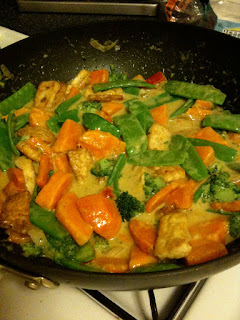Berkshire Pig's Tail with Beans
I didn’t grow up eating offal, but not because it wasn’t around. When I was growing up, my mother would often eat different types of offal: liver, the occasional chicken heart, gizzards—you get the idea. Now, as an adult focused on using all of the animal, offal has a whole new importance for me. In the kitchen, working with offal and understanding the different ways to cook it is an on-going adventure. Sure, I love reading the blogs of offal-fanatics, but sometimes I wonder if they are preaching to the choir. One of my goals is to encourage people who are curious, yet less familiar, with offal to try some of these delicious and easy dishes made from less-than-conventional cuts of meat.
Committing to a big slab of liver or a bowl of tripe for dinner can be a bit much for many people, which is completely understandable. I like to suggest that people should begin by using offal as a component in a dish, rather than starting with the organ meat at the center of the plate. Plus, by using the whole animal in smaller amounts—but more often—in your cooking, you really get to appreciate nose-to-tail cooking across a range of dishes.
Let’s begin at the end. A pig’s end. The tail of a pig is a wonderful ingredient to have stashed in your freezer. Rich with skin, fat, meat, and bones, a pig’s tail can enhance a number of dishes, from soups and stews to baked beans - the focus of today’s post. Beans and pig tails are a perfect pairing. The two humble ingredients work together to create a rich, savory pot of beans for the perfect warming dish on a cold day.
I soaked a pound of snowcap beans overnight, but any variety of dried beans would do. Then I nestled the pig tail into the bottom of the pot with the soaked beans, finally adding enough water to cover up the beans. I also added an onion and a whole clove for flavor. Then, I gently cooked the beans and tail in a 300-325°F oven at a gentle simmer. The beans get plump and begin to soften, while the tail slowly renders out its fat and coats the cooking beans. As time goes on, the skin of the tail also softens and adds gelatin to the beans, giving the entire dish a rich, unctuous mouth feel.
Cooking times can vary based on the size and age of the dried beans; newer crops usually cook faster, as do smaller beans, like pigeon peas compared to large dried lava beans. I suggest planning for 3-4 hours of cooking time.
I didn’t salt the beans until the last hour of cooking, as I think that helps to keep the skins of the beans from splitting. Along with salt, I added a ¼ cup of molasses and two tablespoons of dried mustard powder, which gave the dish a thick, savory-sweet sauce.
I like serving the dish by filling up a bowl of beans and broiling a chunk of the tail in the over until it gets brown and crispy. That’s it – the humble and often overlooked tail becomes a delicious and satisfying dinner!
Recipe at a Glance:
- 1 pig's tail
- 1 lb dried beans, soaked for 8 hours or overnight
- 1 medium onion
- 1 clove
- 1/4 cup molasses
- 2 tablespoons dried mustard powder
- salt and pepper to taste.
Rinse the beans and soak overnight. The next morning, put the beans in a pot with a the pig tail, onion, and clove. Put in a 325 F oven for 3-4 hours. If the beans seem hard and mealy in the center, cook for another hour or two. When beans are tender, add salt, molasses, and mustard.
Cook beans uncovered for one hour more to thicken sauce. Serve in bowls with a segment of pig's tail on top. To make the tails crispy, place under the oven broiler on high for 2-4 minutes.
Recipe at a Glance:
- 1 pig's tail
- 1 lb dried beans, soaked for 8 hours or overnight
- 1 medium onion
- 1 clove
- 1/4 cup molasses
- 2 tablespoons dried mustard powder
- salt and pepper to taste.
Rinse the beans and soak overnight. The next morning, put the beans in a pot with a the pig tail, onion, and clove. Put in a 325 F oven for 3-4 hours. If the beans seem hard and mealy in the center, cook for another hour or two. When beans are tender, add salt, molasses, and mustard.
Cook beans uncovered for one hour more to thicken sauce. Serve in bowls with a segment of pig's tail on top. To make the tails crispy, place under the oven broiler on high for 2-4 minutes.
.JPG)
-2.JPG)
.JPG)


Comments
Post a Comment